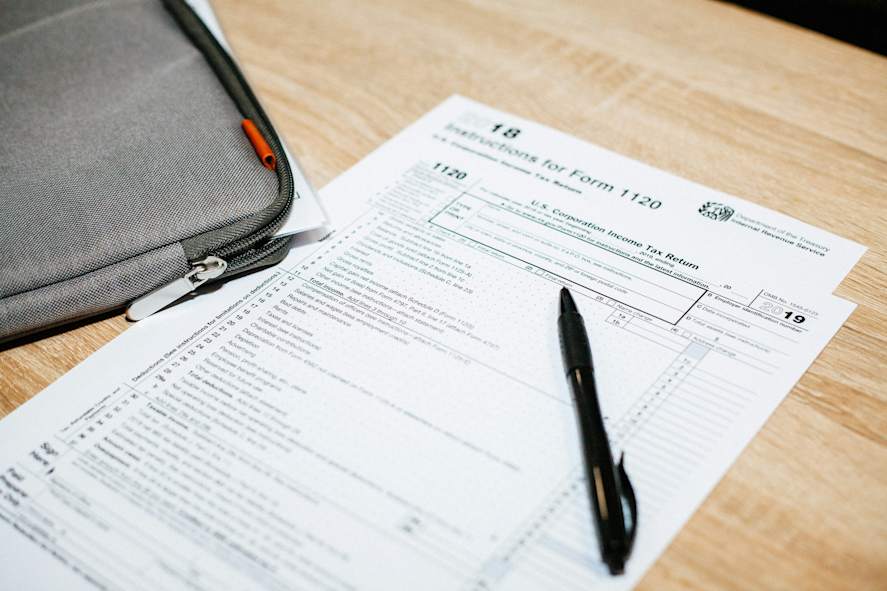
Intuit QuickBooks Small Business Index, December 2024
Simple, smart accounting software - no commitment, cancel anytime

TAX AND PENSIONS
As a UK company dealing in international trade, you may be asked for a Tax ID Number to complete transactions with companies outside of the UK.
Tax ID Numbers are similar to the UK’s Unique Taxpayer Reference (UTR) codes, but the term is broader in other countries, and can also refer to social security numbers; company reference numbers, a resident registration number, or a citizen/personal identification code or number.
In this informative blog from QuickBooks, we explain everything you need to know about Tax ID Numbers. Looking to simplify your tax process? QuickBooks provides easy-to-use software to empower your accounting processes.
In America, the EU, and other parts of the world, a Tax ID Number is a type of ID number that is assigned to most individuals and businesses that allows them to pay tax; but this type of number refers to a few different tax numbers used in the UK.
Tax ID Numbers are generally formatted with a mixture of numbers and letters, similar to the UK’s National Insurance Numbers or Unique Taxpayers Reference numbers. If you are part of a UK company conducting trade with foreign businesses, you will likely be asked to provide them with a TIN number. When this happens, the company in question is likely looking for a UTR or National Insurance number, but there are other numbers that could also fall under the category of a TIN number.
There are a few alternatives to a Tax ID Number in the UK that overseas businesses may be referring to when asking for your TIN. So how do you get a Tax ID number for your business? Well, in reality it is likely you already have one of these numbers assigned to you, because Tax ID numbers can refer to a variety of identifying tax codes in the UK. These are as follows:
A Unique Taxpayer Reference (UTR) is a 10-digit number assigned to new companies by HMRC, or when an individual registers for Self Assessment.
When you register for self-assessment tax returns, set up a business, or engage in other taxable activities such as overseas trade, HMRC issues you a UTR. This number will remain the same throughout your tax dealings, making it easier for HMRC to link and manage your tax records.
It's important to keep your UTR secure, as it serves as a key piece of information when interacting with HMRC and completing various tax-related tasks, such as filing tax returns or accessing online services. As such, if an overseas company requests your TIN number, you should ensure you trust the company or individual you are dealing with before handing over your UTR number.
A UTR number will consist of 10 digits, for example: 1234567890
In the UK, a National Insurance number (NI) is issued by the Department for Work and Pensions (DWP) and is used to track an individual's National Insurance contributions, which fund state benefits and services.
Your National Insurance number is typically issued shortly before your 16th birthday, and it stays with you throughout your life. It is a crucial piece of information when dealing with matters related to employment, taxation, and certain state benefits. Employers use the National Insurance number to ensure that the correct amount of National Insurance contributions and taxes are deducted from an individual's earnings.
When you start working or apply for certain benefits, you may be required to provide your National Insurance number. It's essential to keep your National Insurance number confidential and secure. If you lose your National Insurance card or forget your number, you can contact the National Insurance number helpline or apply for a replacement through the HM Revenue & Customs (HMRC) website.
When dealing with an overseas company, particularly if you are an individual being employed by them, your National Insurance number will be required to pay tax back to the UK government on your overseas earnings.
A National Insurance number is a 9 character reference consisting of 3 letters and 6 numbers in the following format: AB 12 34 56 C
A Company Registration Number (CRN) is a unique identifier assigned to a registered company or business entity. The CRN is issued by Companies House, which is the government agency responsible for maintaining the official register of companies in the UK.
When a company is formed and registered with Companies House, it is assigned a unique Company Registration Number. This number is used to identify and track the company's information in official records. The CRN is important for various administrative and legal purposes, including filing annual returns, financial statements, and other statutory documents.
The Company Registration Number is a public piece of information, and you can usually find it on official company documents, such as the Certificate of Incorporation and Companies House filings. It is often displayed on a company's website and business correspondence.
If you need to verify information about a company or access its official records, you can use the Company Registration Number as a key identifier when searching the Companies House database or other official registers.
A Company Registration Number can either be an 8 digit number, or 2 letters followed by 6 numbers. For example: 12345678, or, AB 123456.
An employee reference number is a unique identifier assigned to an individual employee by their employer. This number is used for internal record-keeping and management purposes within the organisation. The employee reference number is specific to the employer that issues it and helps in tracking and organising information related to each employee.
The exact format and use of employee reference numbers can vary between companies. Some employers may use a simple numerical sequence for employee reference numbers, while others might incorporate letters or other characters. The primary purpose is to distinguish one employee from another in the employer's records.
Employees may be required to provide their reference number when interacting with the HR department, especially when seeking information about their employment history, payroll details, or other employment-related matters. It's important to keep this information secure and use it only for legitimate purposes within the employment context. If an employee is uncertain about their reference number or its use, they should contact their employer's HR department for clarification.
A typical Employee Reference Number will be 3 digits followed by a slash, 2 letters, and 4 numbers. For example: 123/AA4567
In the United Kingdom, a Value Added Tax (VAT) registration number is a unique identifier assigned to businesses that are registered for VAT with HMRC. VAT is a consumption tax levied on the sale of goods and services, and businesses with a certain level of taxable turnover are required to register for VAT.
Once a business is registered for VAT, HMRC issues it a unique VAT registration number. This number is used for identification purposes in all VAT-related transactions and correspondence. It typically consists of a combination of numbers and letters and is unique to the specific business entity.
The VAT registration number is an essential piece of information for both the registered business and its customers. Businesses are required to display their VAT registration number on invoices and other official documents. Customers can use this number to verify the VAT status of a business and, in some cases, to reclaim VAT on eligible purchases.
If you are a business owner in the UK and your taxable turnover exceeds the threshold set by HMRC, you are obligated to register for VAT, and upon registration, you will be issued a VAT registration number.
If you are purchasing from or selling goods to an overseas company, you may be required to provide them with a VAT registration number. In the UK, a VAT registration number will usually be the letters ‘GB’, followed by 9 digits. For example: GB123456789.
QuickBooks’ simple accounting software empowers businesses, accountants, and Self-Employed individuals with the ability to automatically organise, calculate, and prepare Making Tax Digital for VAT and filing Self-Assessments to HMRC.
Try QuickBooks free for 1 month by exploring our Plans & Pricing page.
The term ‘Tax ID number’ is not officially used in the UK, instead being commonly used in overseas territories such as America and the EU - although Tax ID Number can refer to a variety of tax related terms and references in the UK such as National Insurance numbers, Unique Taxpayer References, VAT numbers, and more.
You can find your 10-digit Unique Taxpayer Reference (UTR) by logging onto your Personal Tax Account on the gov.uk website. If you have recently registered for Self-Assessment, you will first receive your UTR in the post around 10 days after registering.
You will only be assigned a UTR number if you have registered for Self-Assessment with HMRC. It may take up to 3 weeks to receive a UTR number in the post, but once this number has been assigned to you, it will be referenced in all your tax correspondence with HMRC.
This content is for information purposes only and should not be considered legal, accounting, or tax advice or a substitute for obtaining such advice or research specific to your business. Additional information and exceptions may apply. No assurance is given that the information provided is comprehensive accurate or free of errors. Intuit does not have any responsibility for updating ore revising any information presented herein. Viewers should always verify statements before relying on them.
9.00am - 5.30pm Monday - Thursday
9.00am - 4.30pm Friday